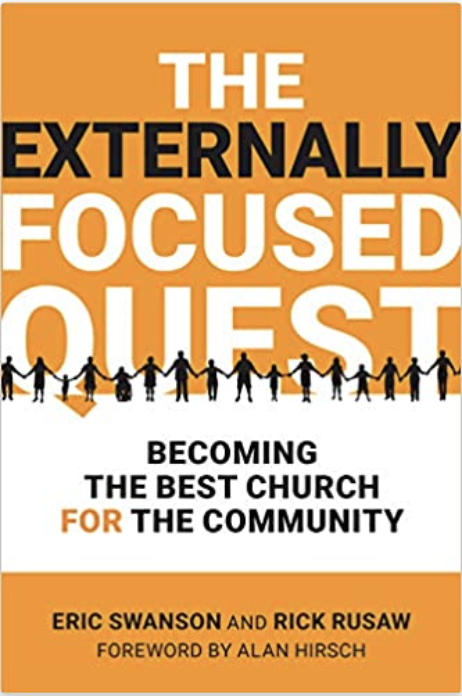The Art of Innovation–Guy Kawasaki
by Guy Kawasaki
One of the highlights of the Catalyst Conference was listening to Guy Kawasaki. Guy was with Apple during the boom years and now is a venture capitalist. He has a great blog at http://www.guykawasaki.com/ . Here are his ten principles
1. Make Meaning
Focus on making meaning, not money. If your vision for your company is to grow it just to flip it to a large company or to take it public and cash out, “you’re doomed”. Two reasons to innovate:
- To end bad things
- Prevent the end of something good.
“This means you can change the world!”
2. Make Mantra
There is a difference between mantra and mission. Take a look at Wendy’s Mission Statement
Our guiding mission is to deliver superior quality products and services for our customers and communities through leadership, innovation and partnerships
Instead, Kawasaki recommends coming up with a simple mantra, preferably three words or less, that succinctly describes your core values. Some examples he gave:
- Wendy’s: “Healthy fast food”
- Nike: “Authentic athletic performance”
- FedEx: “Peace of mind”
- EBay: Democratization of Commerce
3. Jump to the next curve
Great companies aren’t created when you want to improve by 10% but by ten times.
- Reboot your brain. You have to break old patterns of behavior in order to adopt new ones. People who cut ice out of lakes, carried ice from ice factories and built refrigerators were three different enterprises. They didn’t realize that they were in the ice business
- If you define your organization by what you do, you will miss the curve
4.Role the DICEE
· Deep—utility—sandal w/ bottle opener
· Intelligent—someone anticipated what I needed
· Complete
· Elegant—great design plus it works
· Emotion—you love it or hate it
5. Don’t worry, be crappy. Voltaire once said, “The best is the enemy of the good.” If companies waited to completely perfect a product before releasing it, they would never get anything out. It’s OK if your 1.0 release is a little rough around the edges, so long as it still creates value for customers.
6. Polarize people. You can’t please everyone. It’s better to have a small, fiercely loyal customer base than to create a mediocre product that fades quickly into obscurity. Some examples he gave were the Macintosh, Harley-Davidson, Tivo, and the Scion XP (People under 25 look at it and say, “Hey, cool car!” People over 25 look at it and say, “It must have been designed by someone who got fired from Volvo.”)
7. Let a hundred flowers blossom.
· Your best customers may not be who you expect them to be, and no matter how good you are, no matter how much market research you do, you can’t perfectly predict what will happen in the real world.
· Look for agnostics, not atheists. Everyone wants to have those “marquee customers”, but large corporations are usually resistant to those ideas that “jump the curve”. Find the early adopters who are open to new ideas and save the big fish for later.
· Don’t be proud. Don’t be surprised when the people who are buying your product aren’t your intended target market. Instead find out why they’re buying it and capitalize on your newfound good fortune.
8. Follow the 10/20/30 rule.
When making presentations to clients or investors, use:
· 10 slides – Not 50 as most people do
· 20 minutes – You may have an hour, but some people will be late, others may leave early, and you want plenty of time for Q&A.
· 30 point font – If you use a small font, it usually means you’re trying to use a lot of text, which implies that you’re a lousy speaker (which most tech company CEOs are, he says). Why? Because they don’t practice.
9. Niche yourself.
Ideally, you create something that is both of high value to customers and that few others are doing. If you consider uniqueness and value creation as the two parameters, you have four quadrants:
· High value, low uniqueness – You compete on price.
· Low value, high uniqueness – This is the “stupid” quadrant. It doesn’t matter if you have no competition if no one wants to buy your product.
· Low value, low uniqueness – The “dotcom” quadrant. At one point, someone said, “We’re going to change how people buy dog food. We’re going to sell it online. We’ll cut out the middleman and people will be able to buy it cheaper.” But they forgot one thing: dog food is heavy. The money saved was offset by high shipping costs. The crazy thing is not that a company didn’t realize this, but that at one point, 16 companies were selling dog food online. Of course, most of them are no longer in business – no great surprise.
· High value, high uniqueness – This is where you make money, margins and meaning.
10. Don’t let the bozos grind you down.
Some bozos are easy to spot. They’re grumpy, cynical people who shoot down all your ideas. But beware the “successful bozo” wearing a nice suit. “People automatically equate ‘rich’ with ‘smart’,” he says. “That’s a big dialectical leap.” Often very successful people can’t embrace the next curve.









